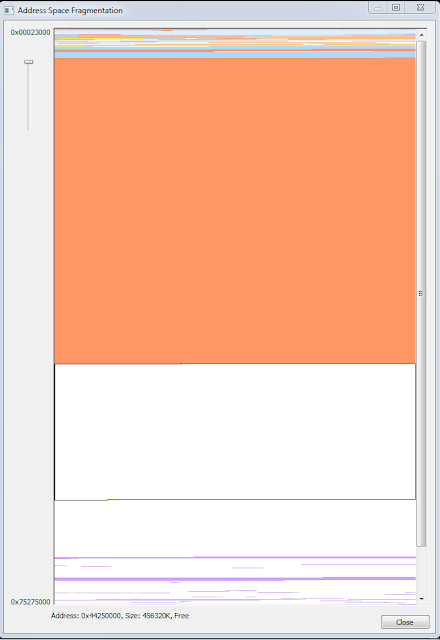I was reading an article on MSDN regarding the naming of files, paths, and namespaces[1] and I discovered some interesting peculiarities regarding the naming and creation of certain files containing alternate data streams.
I started by playing around with naming files based upon reserved device names "CON, PRN, AUX, NUL, COM1, LPT1, etc." As an example:
I started by playing around with naming files based upon reserved device names "CON, PRN, AUX, NUL, COM1, LPT1, etc." As an example:
C:\temp>echo hi > \\?\C:\temp\NUL
Note that this file can only be created when the prefix "\\?\" or "\\.\GLOBALROOT\Device\HarddiskVolume[n]\" is appended. Subsequently, this is also the only way to delete the file.
This technique has been known about for over a year now and is well documented[2][3].
What I found to be interesting is that when you create an alternate data stream that is attached to a file named after any reserved device name, the alternate data stream is invisible to both 'dir /R' and streams.exe unless you append the "\\?\" prefix to the path. Also, if the ADS happens to be an executable, it can be executed using WMIC. As an example:
This technique has been known about for over a year now and is well documented[2][3].
What I found to be interesting is that when you create an alternate data stream that is attached to a file named after any reserved device name, the alternate data stream is invisible to both 'dir /R' and streams.exe unless you append the "\\?\" prefix to the path. Also, if the ADS happens to be an executable, it can be executed using WMIC. As an example:
C:\temp>type C:\Windows\System32\cmd.exe > \\?\C:\temp\NUL:hidden_ADS.exe
C:\temp>dir /r C:\temp
Directory of C:\temp
09/17/2011 06:35 AM
09/17/2011 06:35 AM
09/17/2011 06:37 AM 5 NUL
1 File(s) 5 bytes
C:\temp>streams C:\temp
Streams v1.56 - Enumerate alternate NTFS data streams
Copyright (C) 1999-2007 Mark Russinovich
Sysinternals - www.sysinternals.com
No files with streams found.
C:\temp>wmic process call create \\?\C:\temp\NUL:hidden_ADS.exe
Executing (Win32_Process)->Create()
Method execution successful.
Out Parameters:
instance of __PARAMETERS
{
ProcessId = 1620;
ReturnValue = 0;
};

So what are the implications of this?
1) You have a file that's nearly impossible to delete unless you know to append '\\?\'
2) You can hide malicious files/executables within the device name file in an ADS that is undetectable using traditional tools.
3) If an executable is hidden in the invisible ADS, it can be executed via WMIC.
As an added comment, according to the same MSDN article: "characters whose integer representations are in the range from 1 through 31, except for alternate data streams where these characters are allowed." This would allow someone to create an ADS using alt-characters. As an example:
2) You can hide malicious files/executables within the device name file in an ADS that is undetectable using traditional tools.
3) If an executable is hidden in the invisible ADS, it can be executed via WMIC.
As an added comment, according to the same MSDN article: "characters whose integer representations are in the range from 1 through 31, except for alternate data streams where these characters are allowed." This would allow someone to create an ADS using alt-characters. As an example:
C:\temp>echo hi > C:\temp\test.txt
C:\temp>echo secret text > C:\temp\test.txt:^G^G^G
C:\temp>dir /R C:\temp
Directory of C:\temp
09/17/2011 07:09 AM
09/17/2011 07:09 AM
09/17/2011 07:08 AM 5 test.txt
14 test.txt::$DATA
1 File(s) 5 bytes
C:\temp>more < C:\temp\test.txt:^G^G^G
secret text
The ADS is named after three system bell characters
 |
| Happy ADS created using |
The bottom line: these techniques would serve as both a good malware persistence mechanism and serve to frustrate any incident handler.
1. Microsoft, "Naming Files, Paths, and Namespaces", http://msdn.microsoft.com/en-us/library/aa365247(VS.85).aspx
2. Dan Crowley, "Windows File Pseudonyms," April 2010, http://www.sourceconference.com/publications/bos10pubs/Windows%20File%20Pseudonyms.pptx
3. Mark Baggett, "NOT A CON!!!! (it's a backdoor)," February, 15 2010, http://pauldotcom.com/2010/02/deleting-the-undeleteable.html

